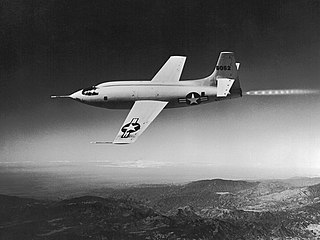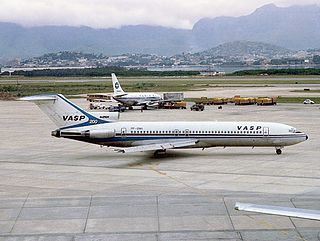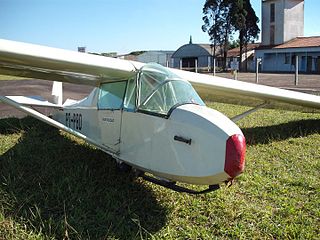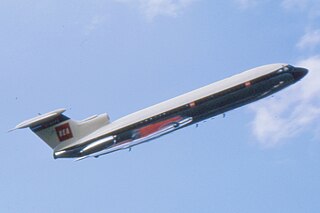See also
Aircraft of comparable role, configuration, and era
| W-141 | |
|---|---|
| Role | Utility aircraft |
| Manufacturer | OMAREAL (Officina de Manutenção e Recuperação de Aviões, Ltda.) |
| Designer | Willibald Weber |
| First flight | 1957 |
| Status | Cancelled project |
| Number built | 3 |
The Weber W-141 was a utility aircraft designed in Brazil in 1950. It was the second project developed by Weber, and made its maiden flight in 1957. It was the first all-metal, single-engine aircraft assembled nationally. During its initial tests it accumulated more than 40 flight hours in Botucatu. The prototype was sent to São José dos Campos, for certification at CTA and then to be serially manufactured. During the tests, the unfamiliar pilot had difficulties in flight and when landing he went over the runway limit, totally destroying the aircraft, the pilot was not injured.
Because of this accident the plane was not certified for serial production, and the project was abandoned. The other models were used by the Brazilian Air Force for testing.
Aircraft of comparable role, configuration, and era

The Bell X-1 is a rocket engine–powered aircraft, designated originally as the XS-1, and was a joint National Advisory Committee for Aeronautics–U.S. Army Air Forces–U.S. Air Force supersonic research project built by Bell Aircraft. Conceived during 1944 and designed and built in 1945, it achieved a speed of nearly 1,000 miles per hour in 1948. A derivative of this same design, the Bell X-1A, having greater fuel capacity and hence longer rocket burning time, exceeded 1,600 miles per hour in 1954. The X-1, piloted by Chuck Yeager, was the first manned airplane to exceed the speed of sound in level flight and was the first of the X-planes, a series of American experimental rocket planes designed for testing new technologies.

The Northrop X-4 Bantam was a prototype small twinjet aircraft manufactured by Northrop Corporation in 1948. It had no horizontal tail surfaces, depending instead on combined elevator and aileron control surfaces for control in pitch and roll attitudes, almost exactly in the manner of the similar-format, rocket-powered Messerschmitt Me 163 of Nazi Germany's Luftwaffe. Some aerodynamicists had proposed that eliminating the horizontal tail would also do away with stability problems at fast speeds resulting from the interaction of supersonic shock waves from the wings and the horizontal stabilizers. The idea had merit, but the flight control systems of that time prevented the X-4 from achieving any success.

The Curtiss-Wright XP-55 Ascender is a 1940s United States prototype fighter aircraft built by Curtiss-Wright. Along with the Vultee XP-54 and Northrop XP-56, it resulted from United States Army Air Corps proposal R-40C issued on 27 November 1939 for aircraft with improved performance, armament, and pilot visibility over existing fighters; it specifically allowed for unconventional aircraft designs. An unusual design for its time, it had a canard configuration, a rear-mounted engine, swept wings, and two vertical tails. Because of its pusher design, it was sarcastically referred to as the "Ass-ender". Like the XP-54, the Ascender was designed for the Pratt & Whitney X-1800 engine, but was re-designed after that engine project was canceled. It was also the first Curtiss fighter aircraft to use tricycle landing gear.

The Bell X-14 is an experimental VTOL aircraft flown in the United States in the 1950s. The main objective of the project was to demonstrate vectored thrust horizontal and vertical takeoff, hover, transition to forward flight, and vertical landing.

The Brazilian Air Force is the air branch of the Brazilian Armed Forces and one of the three national uniformed services. The FAB was formed when the Army and Navy air branches were merged into a single military force initially called "National Air Forces" in 1941. Both air branches transferred their equipments, installations and personnel to the new force.

The Brazilian Department of Science and Aerospace Technology is the national military research center for aviation and space flight. It is subordinated to the Brazilian Air Force (FAB).
The FICON program was conducted by the United States Air Force in the 1950s to test the feasibility of a Convair B-36 Peacemaker bomber carrying a Republic F-84 Thunderflash parasite fighter in its bomb bay. Earlier wingtip coupling experiments included Tip Tow, which were attempts at carrying fighters connected to the wingtips of bombers. Tom-Tom followed the FICON project afterwards.

The Royal Australian Air Force's Aircraft Research and Development Unit (ARDU) plans, conducts and analyses the results of ground and flight testing of existing and new Air Force aircraft. ARDU consists of three test and evaluation flights (TEFs) located at RAAF Bases Edinburgh, Amberley and Williamtown, staffed by qualified test pilots, flight test engineers and flight test system specialists. Up until 2016 the Squadron also conducted flight test for the Australian Army with Army personnel also working within the unit.

The Saab 90 Scandia was a civil passenger aeroplane, manufactured by the Svenska Aeroplan Aktiebolaget (SAAB), in Linköping, Sweden. In 1944, as it was becoming clear that hostilities in Europe would soon be at an end, SAAB realised that the company had to diversify from purely military endeavours if it were to survive. The board therefore decided to put into action a plan to manufacture a twin-engined, short- to medium-haul passenger aircraft, as a successor for the Douglas DC-3.

The Embraer EMB 202 Ipanema is a Brazilian agricultural aircraft used for aerial application, particularly crop dusting. It is produced by Indústria Aeronáutica Neiva, a subsidiary of Embraer located in Botucatu, Brazil. The latest version of this aircraft is the first ethanol-powered fixed-wing aircraft, which could give it an economical advantage over the gasoline version. The aircraft is widely employed in Brazil, having market share of about 80%, and the 1,000th delivery was completed on 15 March 2005. Besides aircraft, alcohol-conversion kits for gasoline-powered Ipanemas are also sold.

VASP Flight 168, a Boeing 727-212, serial number 21347, registered PP-SRK, was a scheduled passenger flight from São Paulo to Fortaleza, Brazil which, on June 8, 1982, crashed into terrain while descending into Fortaleza, killing all 137 people on board.

The MAA-1 Piranha is a short-range infrared homing missile and the first air-to-air missile developed by Brazil for its Air Force and Navy. It was designed to replace the AIM-9 Sidewinder missile in Brazilian service and has since been exported to Colombia, Indonesia and Pakistan.

TAM Airlines Flight 3054 (JJ3054/TAM3054) was a regularly scheduled domestic passenger flight from Porto Alegre to São Paulo, Brazil. On the evening of July 17, 2007, the Airbus A320-233 executing the flight overran runway 35L at São Paulo during moderate rain and crashed into a nearby TAM Express warehouse adjacent to a Shell filling station. The plane exploded on impact, killing all 187 passengers and crew on board and 12 people on the ground. The crash surpassed Gol Transportes Aéreos Flight 1907 as the deadliest aviation accident in Brazilian territory and in South American history, and remains the deadliest aviation accident involving the A320 proper worldwide, and the second-deadliest air disaster involving the A320 family, surpassed by the bombing of Metrojet Flight 9268, an A321-231, which crashed in Egypt in October 2015 with 224 fatalities.

Brazilian Naval Aviation is the air arm of the Brazilian Navy operating from ships and from shore installations.

The Neiva B Monitor, also designated B-2, is a Brazilian tandem two-seat glider aircraft designed and manufactured by Indústria Aeronáutica Neiva between 1945 and 1955 for primary training and general flying.
The MAR-1 is an air-to-surface (ASM) and surface-to-surface (SSM) anti-radiation missile (ARM) with INS/GPS capability under development by Brazil's Mectron and the Aerospace Technology and Science Department of the Brazilian Air Force. It is designed to suppress enemy air defenses (SEAD) by targeting surveillance radars and fire-control radars.
The Brazilian Organization for the Development of Aeronautical Certification is a nonprofit organization, of public interest, regulated by Brazilian Law number 9.790 as of March 23, 1999, and registered at the Brazilian Ministry of Justice on November 28, 2006.

On 3 June 1966, a newly built Hawker Siddeley Trident jetliner crashed during a pre-delivery test flight near the village of Felthorpe, Norfolk, England, killing all four crew. The aeroplane had entered a deep stall from which the crew were unable to recover. It was the first loss of a Trident aircraft.
SARA - Satélite de Reentrada Atmosférica is a Brazilian satellite project, with the objective of performing experiments in microgravity environment and returning them to the Earth.